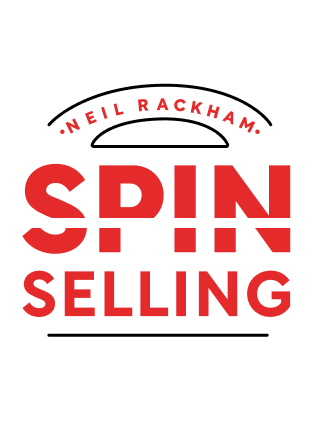

This article is an excerpt from the Shortform summary of "Spin Selling" by Neil Rackham. Shortform has the world's best summaries of books you should be reading.
Like this article? Sign up for a free trial here .
What are the best sales methods? Will they really make you a more successful salesperson?
Salespeople and companies have been trying to figure out the best sales methods for a long time. SPIN selling is a fairly new method with great results, and proves to be one of the best sales methods you can use. Read on to see why.
Evolution of Sales: Finding the Best Sales Methods
For over 60 years, sales organizations preached and practiced the conventional wisdom that traditional selling methods worked in all sales, and that it was the best of the best sales methods. Standard techniques and skills included:
- Opening the call: Establish a personal connection with the buyer, or introduce product benefits.
- Investigating the customer’s needs: Use open-ended and closed (yes or no) questions to uncover needs.
- Presenting benefits: Once you’ve determined the customer’s needs, describe the benefits of buying your product by showing how its features can help.
- Handling objections: Use a range of techniques to overcome customer objections or resistance; for instance, rephrase the objection as a question you can answer.
- Closing the sale: Make a strong closing—use pressure if the customer hesitates—that seals the deal.
Sales training placed particular emphasis on asking appropriate open-ended and closed questions during the investigation stage and on making a forceful closing. But Rackham’s field experience and research showed that some of these traditional techniques were a bad fit for large sales because those sales had different characteristics, and wasn’t universally one of the best sales methods.
The first widely used sales model was developed in the 1920s, and it established the basic ideas of traditional selling, such as using open and closed questions, presenting product features and benefits, handling objections, and using standard closing techniques (such as creating artificial time urgency).
However, in the 1990s, the traditional sales model started becoming less effective as sales grew in price and complexity. SPIN Selling by Neil Rackham created a new model for larger sales, based on research into what top salespeople were doing differently to make major sales.
Rackham, founder of Huthwaite International, a sales research and consulting firm, found that winning major sales requires asking customers different types of questions, rather than just open and closed questions. Further, the techniques and strategies effective in small sales can be a hindrance in large sales.
Rackham developed and extensively tested a new model for major sales, SPIN Selling, which uses a questioning method capsulized by the acronym SPIN: S-Situation, P-Problem, I-Implications, and N-Need-Payoff. SPIN Selling is about how to apply this method, and turn it into one of the best sales methods you’ve ever used.
Sales models have continued to evolve in the 32 years since the book was published in 1988; a variety of models are now debated, taught, and practiced. But SPIN selling principles are still core sales practices, and the book has become a classic and a template for successful selling.
Four Stages of a Sales Call
All the best selling methods have a clear process. Despite the differences between small and large sales, all sales calls have basic similarities. There are four typical stages:
1) Warming up/Opening: The opening is how you introduce yourself, establish connection, and start the conversation. Sales training often teaches that the customer’s impression in the first few minutes of the call is critical to the sale. The opening may have a bearing in a brief one-call interaction, but in large, protracted sales, your opening is less important than what you do in the next stage: the investigating stage.
2) Investigating: In this stage, you ask questions to get information. You’re trying to better understand the customer and discover her needs. Sales reps in large sales ask a greater number and type of probing questions than reps do in small sales, because the stakes are higher.
3) Demonstrating value: Once you understand the customer’s needs, the next step is to show how your product or service can help. In larger sales, where you’re often selling a broader solution, you need to show how your solution solves the customer’s specific problems in a way that makes it worth the cost.
4) Getting commitment: To be a success, a sales call must end with a customer commitment.
In small sales, the customer usually commits to buying the product, while in large sales, she may agree to another meeting or to provide access to a decision-maker. Such intermediate steps are called advances because they advance the sale by moving the customer toward a decision.
Traditional sales training emphasizes the commitment stage—the closing—as the most important, and it advocates a variety of high-pressure closing techniques. But in a major sale, investigating is the most important stage.
The SPIN Selling Approach: The Best Method?
Huthwaite researchers found that successful reps in large sales spend the most time on the investigating stage and handle it differently from the traditional approach. As one of the best selling methods, SPIN uses questions to truly understand customers.
1) S-Situation questions: Start by asking fact-finding and background questions, such as, “What do you see as the company’s biggest growth opportunities?” Asking too many of these questions can impose on the customer’s time and patience, so use them judiciously.
2) P-Problem questions: Once you understand the customer’s situation, ask questions that explore problems or issues your product or solution can solve—for instance, “Are you concerned about meeting your clients’ quality standards with your aging equipment?” Less experienced reps don’t ask enough of these questions.
3) I-Implication questions: Asking good situation and problem questions may be enough to win a small, uncomplicated sale. However, you need to go further in large sales and ask more sophisticated questions that explore the implications or ramifications of a customer’s problem—for example, “How will this affect your fourth-quarter results?” or “What will this mean for your biggest customer?” The point is to underscore a problem’s significance, and create an urgency to address it. These are more difficult questions to frame, even for experienced salespeople.
4) N-Need-payoff questions: These questions lead the customer to articulate the benefits of your product or solution. For example, you might ask, “How useful would it be if we could increase your output by 10%?” or “How would being able to reduce errors help you?” When the customer links the value of solving a problem with the capabilities of your product, he’s more inclined to accept your product as the best solution. Need-payoff questions contribute strongly to success in large sales.
Exercise: Is It One of the Best Sales Methods? Try It!
In the SPIN sales method, reps ask four types of questions during the investigating stage of a call: Situation, Problem, Implication, and Need-payoff questions. Practice the sequence by thinking through a previous sales meeting or one you’re planning for soon.
Picture a customer you’ve met with or will meet with. What problem questions are most appropriate for this customer?
How would you build these problems into implication questions?
How would you develop the biggest problem into an explicit need?
Now discuss the benefits of your solution, avoiding just features or advantages.
Of course, the best sales methods are what you make of them. You can apply the SPIN selling method and implement the strategy, and make it one of the best sales methods you’ve ever used.

———End of Preview———
Like what you just read? Read the rest of the world's best summary of Neil Rackham's "Spin Selling" at Shortform .
Here's what you'll find in our full Spin Selling summary :
- What the SPIN in SPIN Selling stands for
- How to demonstrate real value to the person you're selling to
- How to get commitment from your customer to close the sale fast






